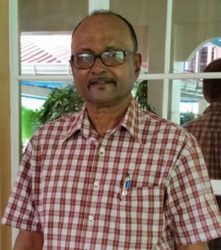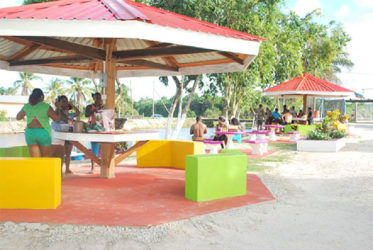Against the backdrop of testing challenges confronting the Essequibo business community in the face of last year’s loss of the Venezuelan PetroCaribe rice market, the ‘Cinderella County’s’ Chamber of Commerce in April elected a new executive headed by 63-year-old hotelier Deleep Singh, with a mandate to design strategies to galvanize the county’s economy.
The Essequibo Chamber is emerging from a three-year period of near dormancy. The Chamber was previously led mostly by bankers and other professionals; Singh is the first bona fide businessman to head it.
Rice and more specifically the loss of the PetroCaribe market is uppermost in the minds of the local business community and when Singh spoke with the Stabroek Business earlier this week, he dropped a broad hint that tough decisions are going to have to be made. Essequibo may not be ready to jettison rice as its economic mainstay, but Singh told this newspaper that the community could no longer stave off the imperative of diversification.

Finding sufficiently lucrative markets is the main challenge facing the rice industry and farmers in the Essequibo have, from time to time, expressed dissatisfaction over the results yielded by the marketing efforts of the Guyana Rice Development Board. (GRDB). Singh says he believes the time has come for the millers themselves to be pressed into service to find markets.
The farmers are in a quandary. They are still owed millions of dollars from the last crop and one of Singh’s earliest official duties will be to meet with the farmers, commercial banks, millers and the various other stakeholders to discuss the way forward. The revival of the Chamber, he hopes, will create a more structured environment in which discourse can take place.
Going forward, Singh says, the rice industry itself will have to undergo a measure of change. Rice may be a long-held business pursuit on the Essequibo Coast which, over the years, has served the farmers well, but now, it seems, there is little choice but to bite the bullet of diversification. The sector, the Chamber President says, is overcapitalized. “Every farmer with ten acres of rice lands has a tractor. In many instances it works for approximately three months a year,” he says. For the rest of the year it is mostly idle while the farmer must face the costs of maintenance.
Talks on the future of rice, Singh says, will almost certainly centre around the issue of diversification. Old habits die hard, he says, but the reality is a stark one and the rice farmers may have no option but to adopt. Coconut cultivation, dairy farming and aquaculture are possible options for diversification. The Chamber President, who grew up in the Pomeroon and still cultivates coconuts and cash crops says that help will be sought from the government, through the Ministry of Agriculture to teach the farmers how to cultivate these crops. Work will also have to done in schools. The turnaround, Singh says, could take as many as ten years but that is the choice that the farmers face.

Coconut cultivation holds out the immediate prospect of significant returns. Singh says that farmers in the Pomeroon river are “doing well” with markets in the Caribbean, particularly Trinidad and Tobago. Singh believes that the multi-million industry can fill the gap created by the current challenges in the rice industry.
The Chamber is conceptualizing a coconut project which it hopes will be executed by farmers on a 12-mile strip of land on the right bank of the Pomeroon River. Drainage and irrigation and an access road to Charity are the current constraints and Singh says that the Chamber will be engaging government on the issue of the infrastructure.
Part of the Chamber’s plan is to engage government on the location of a dairy plant on the Essequibo Coast whilst Singh said audience is being sought with the Region Two Chairman with a view to securing lands for dairy farming.
The new Chamber President also intends to put on the table the intensification of aquaculture, so that the rice crop and fish can coexist.
Singh utilizes the barometer of his own business to help measure what he says has been a downturn in the Essequibo economy. Last year, he says, the 17-room Double D Hotel which he owns and operates at Charity and which caters primarily for tourists and short-stay occupants from the interior recorded around a forty per cent occupancy rate. This year, so far, that has fallen to around thirty per cent.
Even the traditional Monday Charity Market is not what it used to be. Singh says that the lower volume of trading is a reflection of the ebbing fortunes of the gold mining industry. Even more pressure is likely to be placed on the fragile Essequibo economy in the period ahead as more and more men who, not so long ago, had left for the interior with dreams of El Dorado are returning with not a great deal to show for having left their families and in many instances, their farms.
Singh says, meanwhile, that the region’s prospects for tourism appear promising particularly against the backdrop of the volume of invest in resorts, fun parks and hotels over the years. “Tourism is probably the one bright spark in the Essequibo economy at this time. Persons from various other parts of Guyana are finding their way here to visit places like the Mainstay Resort and the Rooster Resort at Onderneeming,” he stated.





